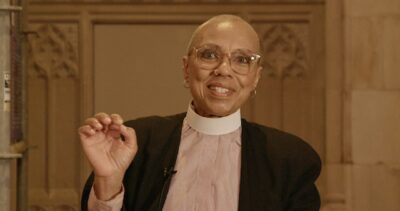Kentucky Night Events
Kentucky Night Events Monday Evening
Food Truck Rodeo
6 – 9 Affordable local food options + live music
God Talks: Conversations for being church together
6 – 7 North Lobby, KY Center for the Arts
God, Grace, & Horses: Life Lessons from the Saddle.
A conversation with the Rev. Laurie Brock
The Rev. Laurie Brock is the Rector of St. Michael’s in Lexington, KY, equestrian, former attorney.
Sponsored by the Brennan Theological Fund of the Diocese of Kentucky
God Talk, Justice & the Church: What do they have to do with each other?
7 – 8:30 — Bomhard Theatre, KY Center for the Arts
A conversation with the 2023 & 2024 Grawemeyer Award in Religion Winners
- The Rev. Dr. Kelly Brown Douglas, Interim President of Episcopal Divinity School
- The Rev. Dr. Charles Halton, Associate Rector, Christ Church Cathedral, Lexington, KY
Sponsored by the Brennan Theological Fund of the Diocese of Kentucky & Episcopal Divinity School
Do Say Gay: A Rousing Evening of Poetry, Prose, and Preaching celebrating Kentucky’s diverse & inclusive LGBTQ+ Community
7 – 8:30 at Church of the Advent, 901 Baxter Avenue, 2 miles from Convention Center
Featuring: KY Poet Hannah Drake, Bishop Mary Glasspool, KY Author Fenton Johnson.
Sponsored by the Church of the Advent & the Brennan Theological Fund of the Diocese of Kentucky
EPISCO-Disco & Compline
9 – 11:15 At Christ Church Cathedral — 421 South 2nd Street
Celebrate this Louisville specialty with a silent disco (each person gets their own headphones!), local snacks, and close the night with Compline.
Other Diocese of Kentucky Sponsored Events
Recital & Evensong at Calvary Church
Sunday – 821 S 4th St
3:30 Recital, 4:00 Evensong
Candlelight Compline at St. Francis in the Fields
Sunday – 6710 Wolf Pen Branch Rd
7:00 Hors d’oeuvres – 8:00 Compline
Drag Me to Church: A Gospel Drag Show
Calvary Church 821 S 4th St
Two Showings:
Friday 7:00
Saturday 7:00

 Elaine Conger
Elaine Conger  Elaine Conger
Elaine Conger La Rev. Catherine Amy Kropp
La Rev. Catherine Amy Kropp Conociendo al capellán de la Trienal
Conociendo al capellán de la Trienal As is customary, the national board dresses and enters the Triennial opening ceremony attired as a prior leader of the Church, the Bible, or historical figure. These representations illustrate ideals each board member wishes to share with the women gathered at Triennial. As you read through this issue of the Communique’, be aware of the blue ECW crosses. Each of the woman’s persona is marked with this cross.
As is customary, the national board dresses and enters the Triennial opening ceremony attired as a prior leader of the Church, the Bible, or historical figure. These representations illustrate ideals each board member wishes to share with the women gathered at Triennial. As you read through this issue of the Communique’, be aware of the blue ECW crosses. Each of the woman’s persona is marked with this cross.